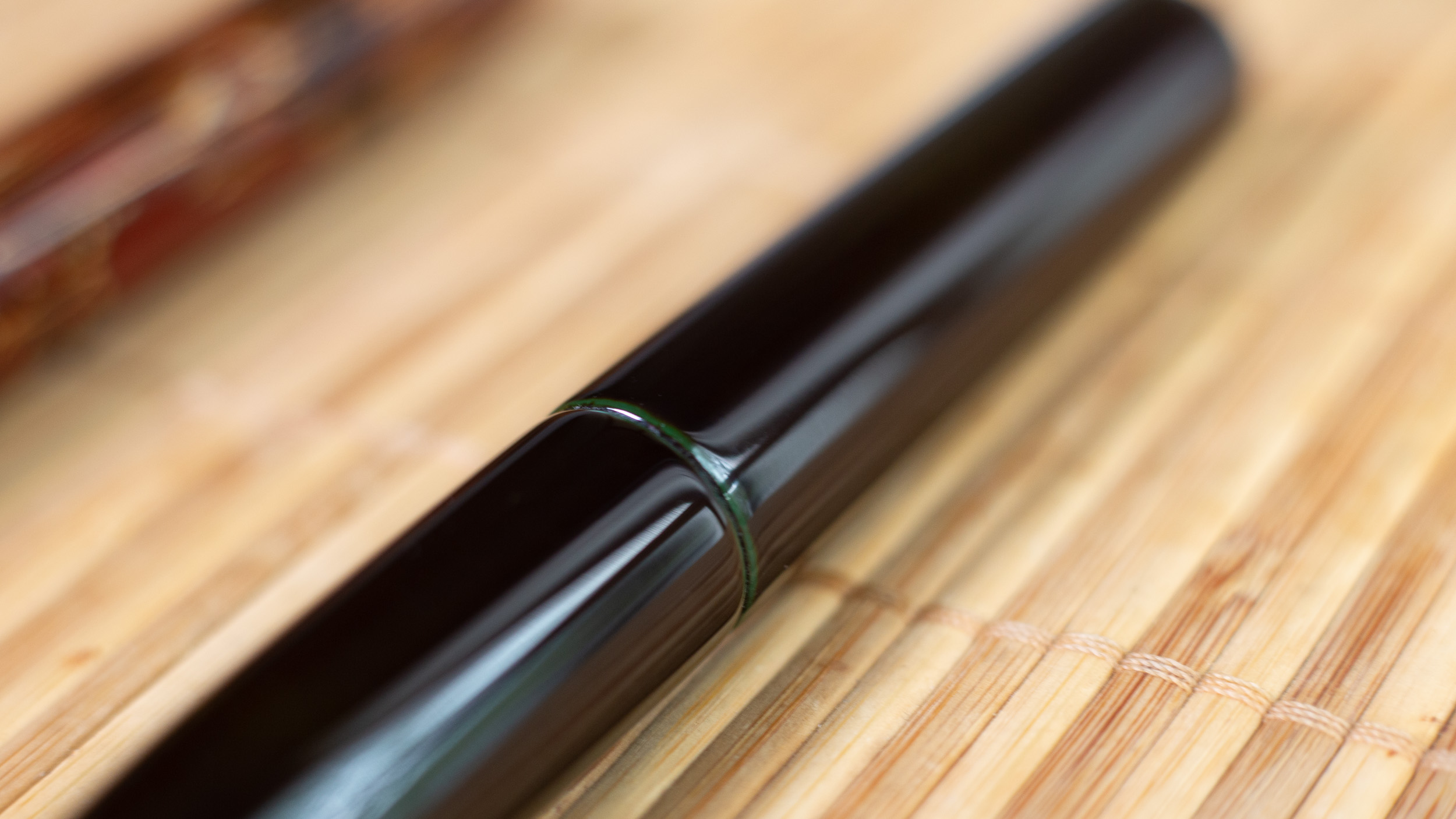What is “tamenuri”?
Video on tamenuri at the end of article
Tamenuri is one of the basic techniques in urushi. Very often used on fountain pens, but also on knife handles, samurai armours, boxes, bowls and other lacquerware. It is layering a transparent (well, translucent) suki urushi over a solid (typically) colour urushi. The purpose of such layering is creating depth, and when well executed, with proper roiro finish, even simple tamenuri lacquered objects can be breathtakingly beautiful. The technique is known since Jomon period (300 B.C. and earlier) and was perfected since then.
Lacquering the lake
Tame – means “lake” or “pool”, nuri means lacquering. And this name says a lot. In the lake, there are areas of shallow water, near the shores, and areas of deep water. In shallow water you can see the bottom. Deep water tends to be much darker, and and in deepest areas you cant see the bottom at all. The more complex the shoreline the more interesting combinations of shallow and deep water can be. Same with tamenuri pens – the more complex shape the better you can see the tamenuri effect. Lacquer tends to pool in some places in thicker layer, in others is much thinner – hence the transparency difference (not from sanding).
 Ao, Midori, Heki, Ki, …
Ao, Midori, Heki, Ki, …
While “tamenuri” as technique name is used and generally understood, different variations of this technique become sometimes mixed up. I’ve seen people discussing on FPN or FPGeeks what type tamenuri is one pen, even arguing about different naming. Probably they were not aware that some”tamenuri” names are brand specific, some are used interchangeably, and some are used for very wide range of colours.

Photo by Nakaya
Most popular naming is known throught Nakaya pens – aka-tamenuri (red and amber), heki-tamenuri (pale green/blue and brown), toki-tamenuri (pink and amber-brown), kuro-tamenuri (green and black). But exactly same colour combinations by other craftsmaen can be called differently – heki-tamenuri can be called ao-tamenuri (and yes, to mix things up, Nakaya used to offer ao-tamenuri which was slightly different). And it is not far away from sora-tamenuri, or mizudori-tamenuri. Next level of complication comes from overlying colours – they can be very light, transparent amber to much darker browns, to practically pitch black (like on Platinum Izumo pens). Even same company can make pens named the same that look differently – Nakayas aka-tamenuri on Dorsal Fin is noticably different than on cigars, not just due to shape of pen.
What makes it shine
The most important factors influencing how tamenuri pens look are:
- shape of pen – the more curves, edges, facets the more “shallow water” – more od underlying colour is visible
- underlying solid colour
- type of overlying urushi – shuai, kijiro, aka-roiro, kuro-roiro, and mixes of them in different proportions
- number of transparent layers and their thickness
- technique of sanding and polishing
- and last but not least – age of pen.
Last point might surprise you. Yes – urushi is changing with time, and “same” technique on 5 year old pen will look VERY differently than on new one. Tamenuri layers will be much more transparent and more of solid basic colour will be visible. Some people (even knowledgable pen experts) think (and write on social media) it is because urushi wears of slightly. Nope, it does not. It just continues to cure and polymerises further and becomes more transparent. And base colours become more bright at the same time too, as pigments are not dulled but urushi as much.
How it’s made
Typical tamenuri pen can be made in anything from 5 to 20 layers (not including uwazuri). After primer, base and nakanuri (sometimes it’s the same) several thin layers of pigments urushi are applied, each cured and sanded. Final colour layer is sanded to perfection – it must be even, flat, smooth, almost like ready for uwazuri. It is very important to have such finish as overlying layer are very thin and any imperfection in colour layer will be very visible. Then a thin layer (or two) of high quality transparent urushi is applied, often a mix of shuai and kijiro – with mixing urushi of different transparency you can regulate the effect. For black overlayer kuro-roiro is used, but it is “dilutted” with transparent urushi, as just kuro-roiro would be not transparent enough. Once cured pen basicaly ready, or very slightly sanded with high grit, and polished.
 Other uses of tamenuri
Other uses of tamenuri
Basic tamenuri technique can be mixed with other methods of lacquering and decorating. Akebono-nuri in one of its versions is red base colour, covered with black kuro-roiro, and sanded in a way to reveal red underlayer in on part of the pen much more, creating gradient from red to black. The effect is different than typical bokashi-nuri used on lacquerware.
Tamesukashi is mix of tamenuri and basic maki-e – before application of tamenuri layers, the artist paints with e-urushi or maki-e technique on colour layer. On finished pen, the drawing is slightly visible through final layers and becomes more visible with time. Tamenuri can be applied on many other techniques or finished tamenuri object can be used as base for another technique (like maki-e or chinkin).
I make a lot of tamenuri pens, and still discover new way of working with technique and perfecting it. One of my tamenuri pens is in personal collection of SBRE Brown and was chosen by hime to GOAT 2021 (Greates of All Time). For those of you who as for this pen – it’s a variation of tamenuri based on green, and I called it Midori “Brown” Tamenuri 😉
Learn more:
Support my work, and help me build this website and Youtube channel.




